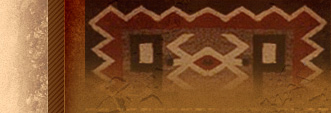 |
 |
| |
Burning Through the Roots, Part 15
|
|
| |
Footnotes
1. Summer "comes up from the South" only in the Northern Hemisphere, of course. But the Circle, like other aspects of Indigenous culture, is Place-based --and that includes hemisphere as well as latitude.
2. Consciousness is variously seen by scholars such as Estes, Jung, and Campbell as an emergent phenomenon arising from human biology or as an independent phenomenon related to, but not wholly dependent on, human biology.
3. Western scholars who have come to a similar understanding of the ontologically real relationship between "symbol" and "the natural world" in some of their writings include Paul Ricoeur and Alfred North Whitehead.
4. Pyne, Stephen J. 2004. Tending Fire: Coping with America's Wildland Fires. Island Press, Washington. page 66.
5. This account of the Cheyenne Outbreak is based on materials found in two sources: Sandoz, Marie. 1953. Cheyenne Autumn. McGraw-Hill, New York. and Brown, Dee. 2001. Bury My Heart at Wounded Knee. (Anniversary Edition) Henry Holt and Company.
6. Custer, George Armstrong. 1977 (reprint). My Life on the Plains: Or Personal Experiences with the Indians. University of Oklahoma Press, Norman. pages 281-282.
7. Sandoz, Marie. 1953. Cheyenne Autumn. McGraw-Hill, New York. pages xvi-xvii.
8.
See, for example, Allen, Craig D. et al. 1998. LUHNA Chapter 9: Landscape Changes in the Southwestern United States: Techniques, Long-term Data Sets, and Trends. in Perspectives on the land-use history of North America: a context for understanding our changing environment. United States Geological Survey Biological Sciences Report, USGS/BRD/BSR 1998-0003 (Revised September 1999). 104 pages. http://biology.usgs.gov/luhna/chap9.html
9. The Jesse Earl Hyde Collection is maintained at Case Western Reserve University (CWRU), Department of Geological Sciences. We are using their images with permission. You can access the archive at http://geology.geol.cwru.edu/~huwig/
10. Jamison, Michael. 2005. "Through following avian wildlife, a UM scientist has discovered that burned forests play a critical role in the health and diversity of the Western landscape." The Missoulian, August 11. cited in DellaSala, Dominick A. 2006. Post-Fire Logging: Summary of Key Studies and Findings. World Wildlife Fund Report. page 21.
11. Beschta, Robert L. et al. 2004. Postfire management on forested public lands of the Western United States. Conservation Biology, 18(4):957-967.
12. Lindenmayer, D.L., D. Perry, and J.F. Franklin. 2002. Conserving Forest Biodiversity: A Comprehensive Multiscale Approach. Island Press. Washington, DC. page 69.
13. DellaSala, Dominick A. 2006. Post-Fire Logging: Summary of Key Studies and Findings. World Wildlife Fund Report.
14. Thomson, Jonathon R. et al. 2007. Reburn severity in managed and unmanaged vegetation in a large wildfire. Proceedings of the National Academy of Sciences, 104(25):10743-10748.
15. Donato, D. C. et al. 2006. Post-Wildfire Logging Hinders Regeneration and Increases Fire Risk. Science, 311(5759):352.
16. Beschta, Robert L. et al. 1995. Wildfire and Salvage Logging: Recommendations for Ecologically Sound Post-Fire Salvage Management and Other Post-Fire Treatments On Federal Lands in the West. (Government-ordered report that was refused by the federal administration. http://www.saveamericasforests.org/congress/Fire/Beschta-report.htm)
17. Donato, D. C. et al. 2006. Response to Comments on "Post-Wildfire Logging Hinders Regeneration and Increases Fire Risk". Science, 313(5787):615c.
18. Ulanowicz, Robert E. 1997. Ecology, the Ascendant Perspective. Complexity in Ecological Systems Series. Columbia University Press, New York. pages 90-91.
19. Lindenmayer, D.B. et al. 2004. Salvage harvesting policies after natural disturbance. Science 303:1303.
20. Lindenmayer, David B. et al. 2009. Opportunity in the wake of natural disasters. Science, 324(5926):463.
Previous
|
|
|
|
|
|
 |
|
|

